The challenge of the project was to design a tool that could facilitate a ritual that would promote connection or awareness of organisms that compose local coastal shorelines. The tool had to be portable and engaging. We paid particular attention to kelp, its protection, and the critical role that kelp forests play in this ecosystem. I was pleased to collaborate with Julia de la Puente.
We realized aquatic plants are often unnoticed. Our intention was to invite people to touch and interact with kelp.
Tangible experiences and memories inspired us. Both of us have had experiences with kelp, primarily unpleasant ones, through touch. Keeping this in mind, we thought people might share our same aversion to touching kelp. We saw this as an opportunity to show people that kelp is not something you should avoid. It’s something you can feel and explore when found on the shoreline.
Our tool and ritual would invite people to have a positive experience with kelp through touch and play. We aimed to promote awareness of kelp, which is elemental if we want the public to be responsible for its protection.
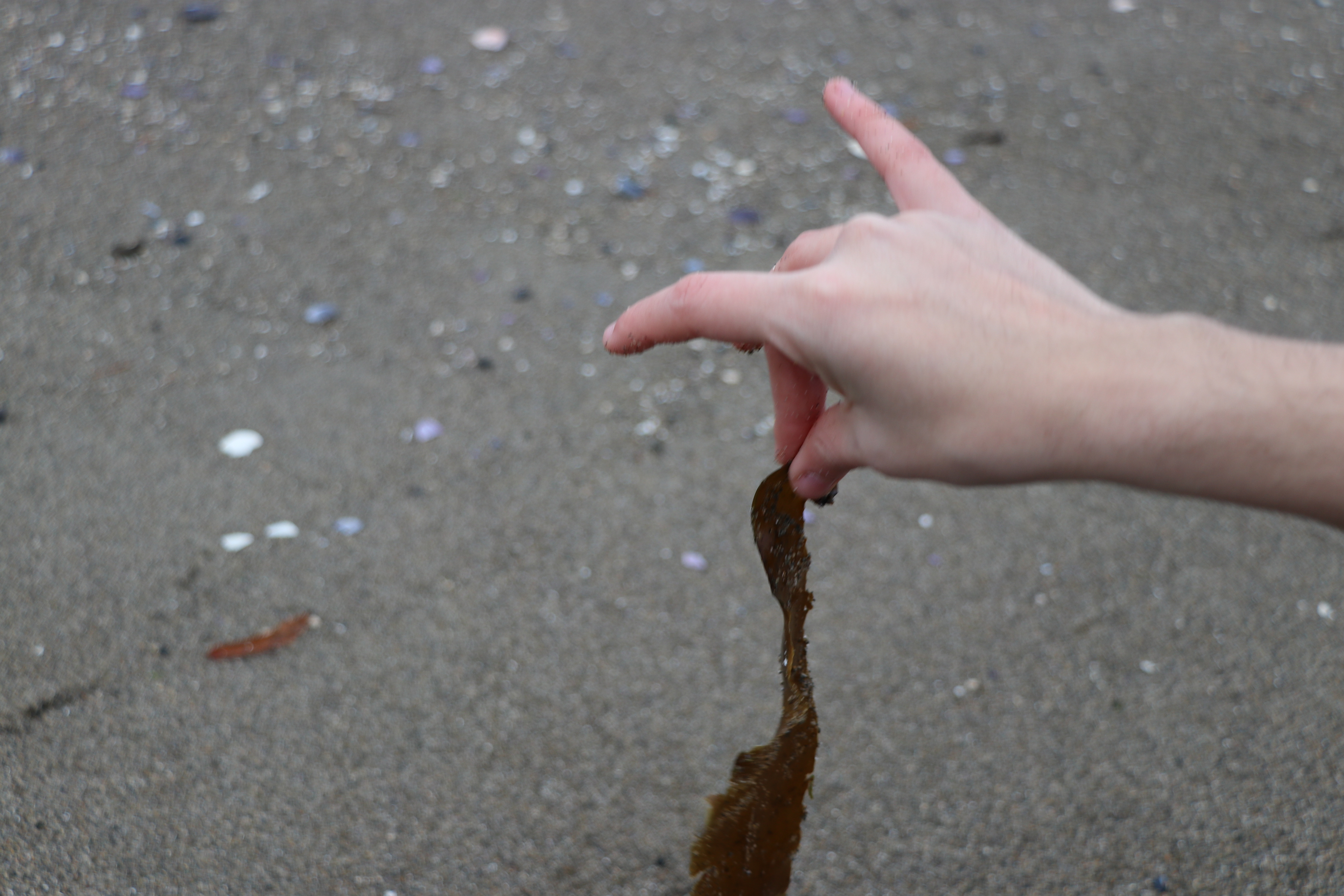
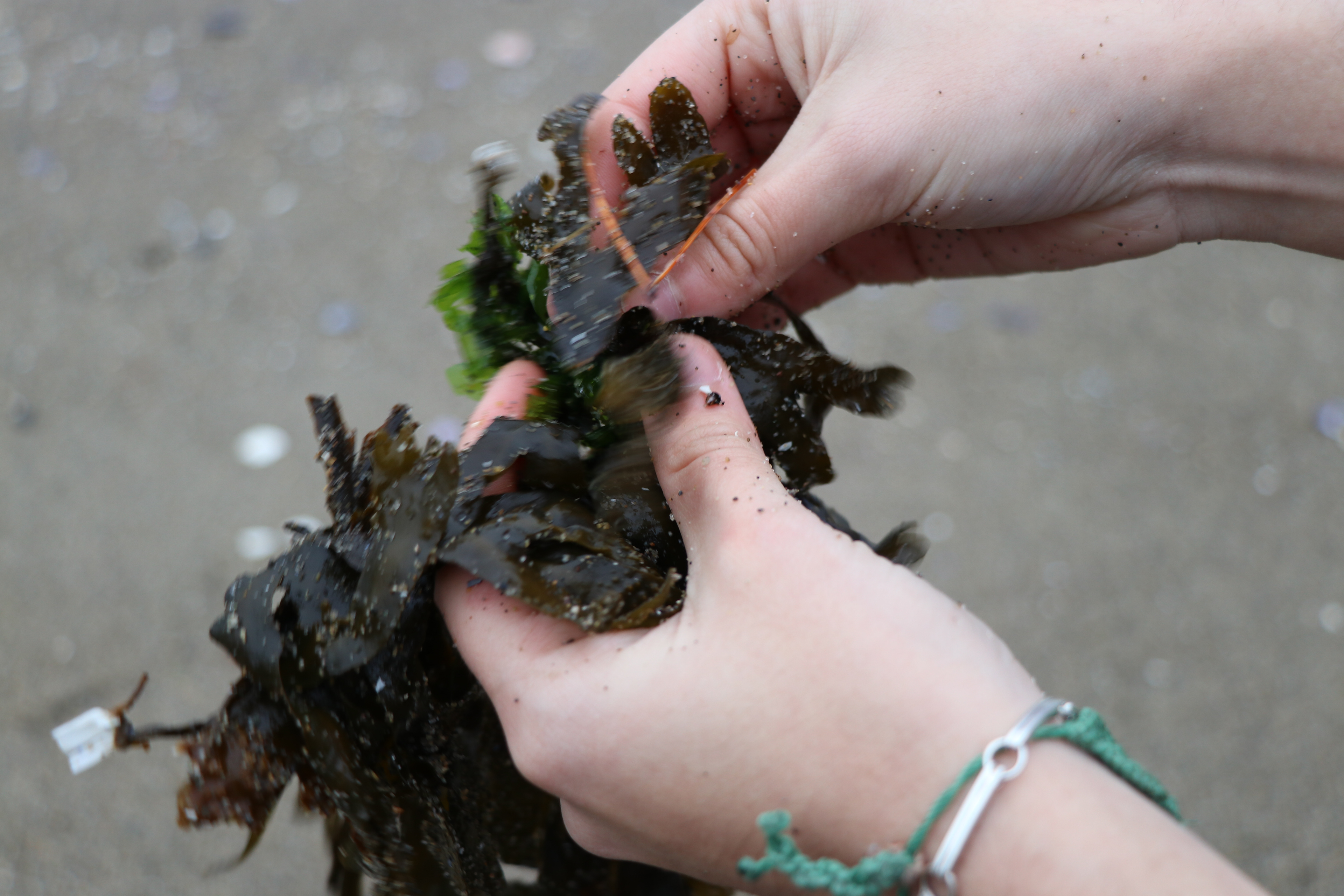
When researching, we found some fascinating pieces of kelp that had washed up to shore. We observed, touched, smelled, and played with them in a way we hadn’t done before. Because we knew the success of our tool would ultimately depend on it being able to be used with the kelp found on the beach, we went to plenty of beaches. We noticed that we would find different kinds of kelp on each shore. Being able to visit numerous beaches gave us the ability to have a better understanding of the types of kelp found on local shorelines.
When covered with sand, kelp had an unpleasant feeling on our fingertips. We constructed various iterations of a tool to help people rinse kelp beforehand so they would be more inclined to touch it.
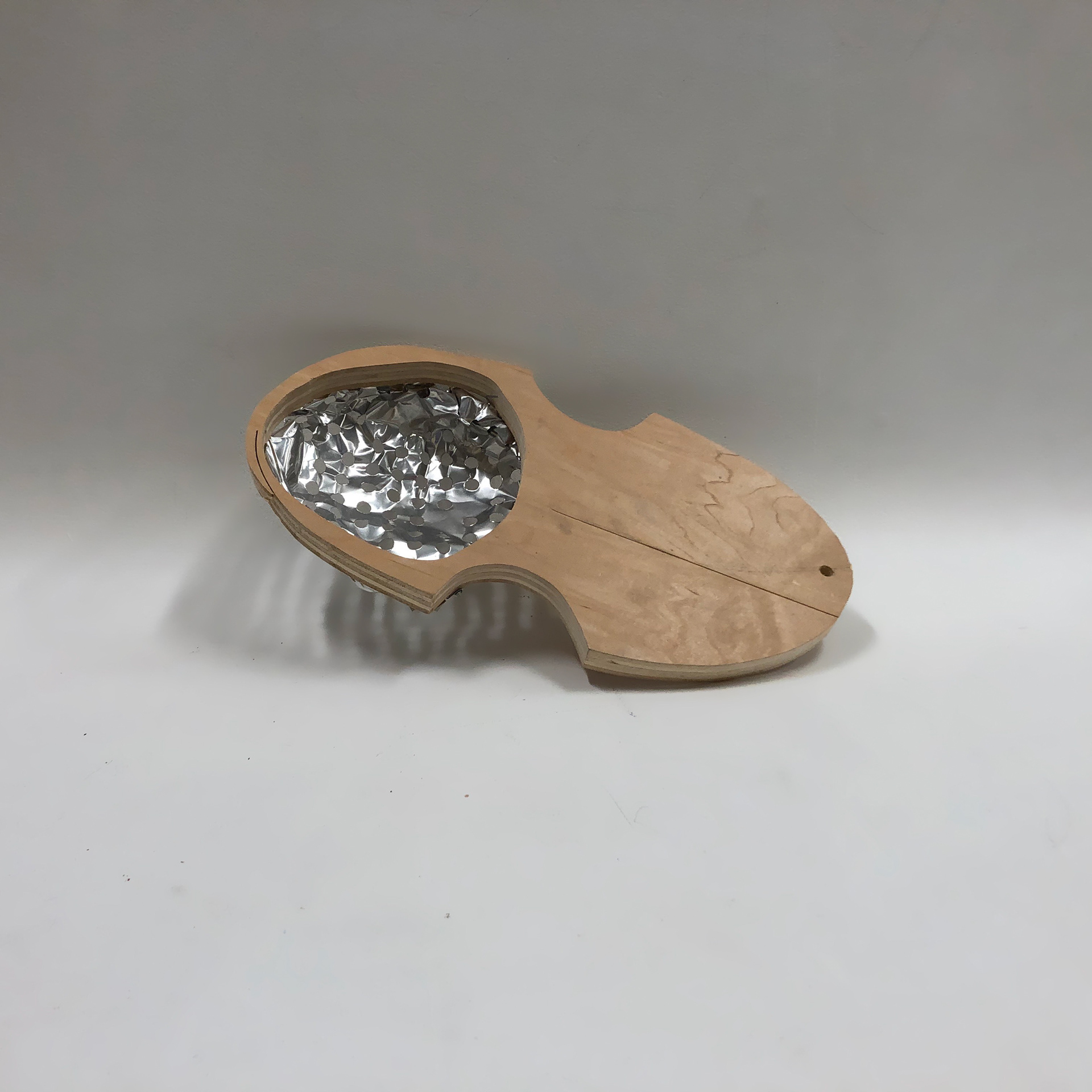
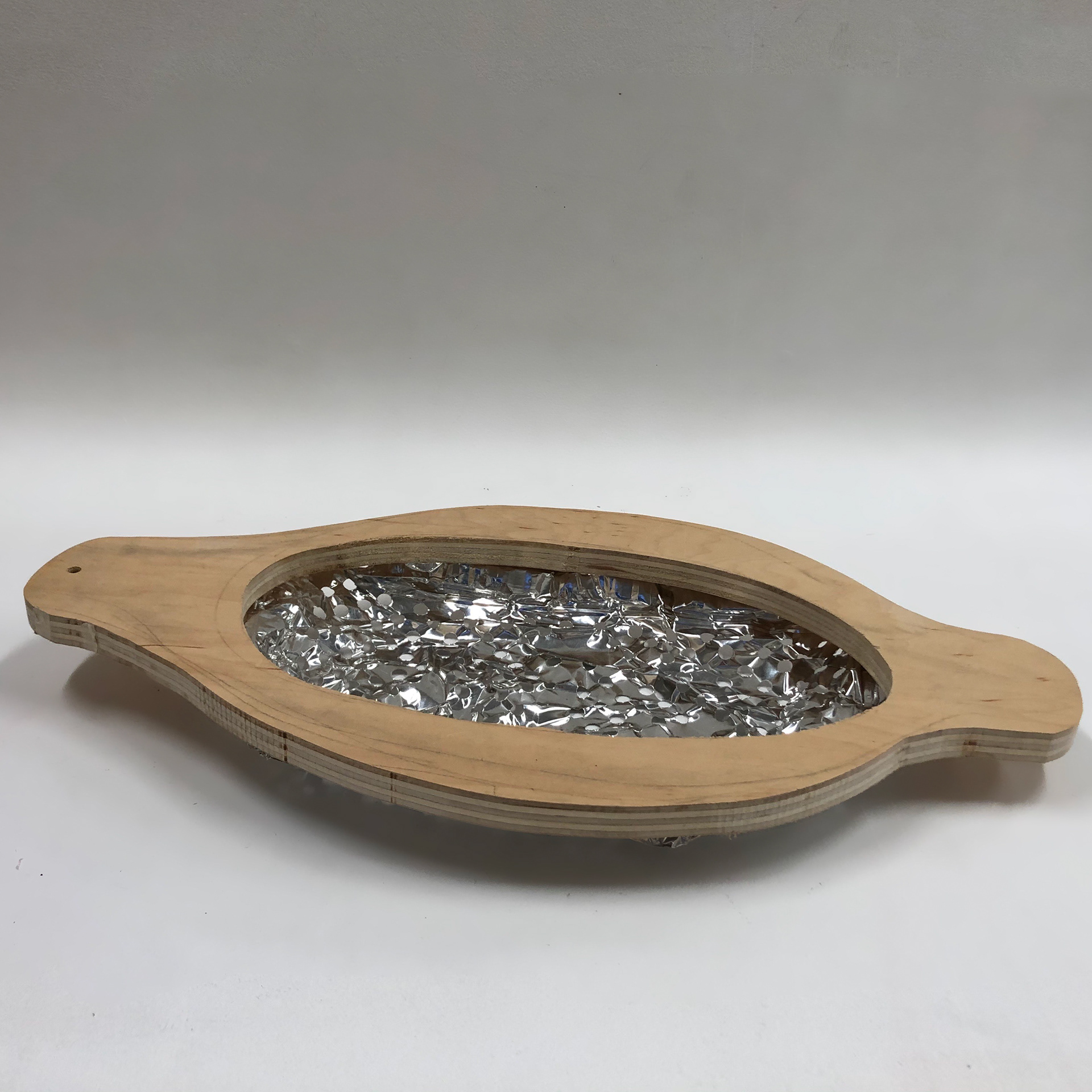
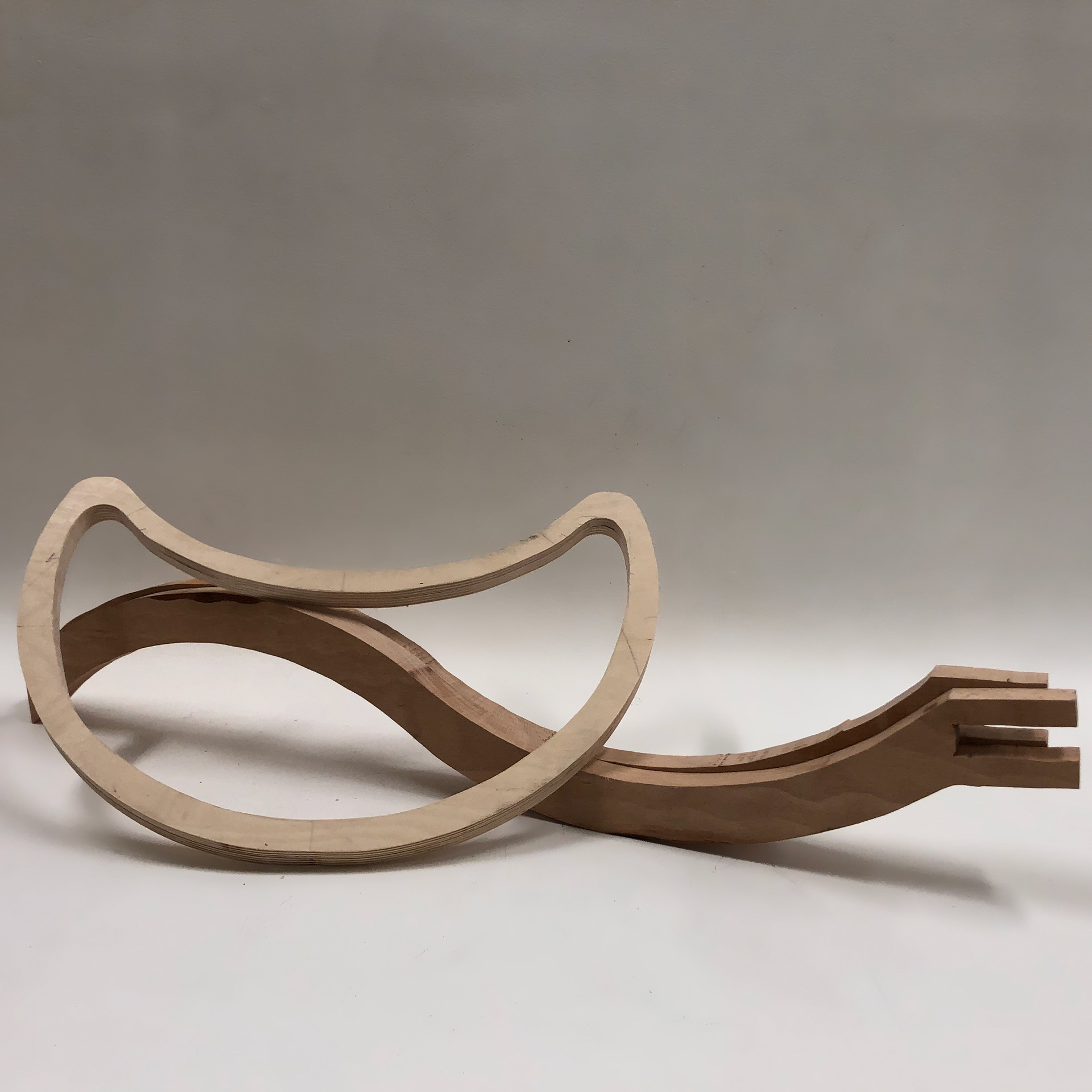
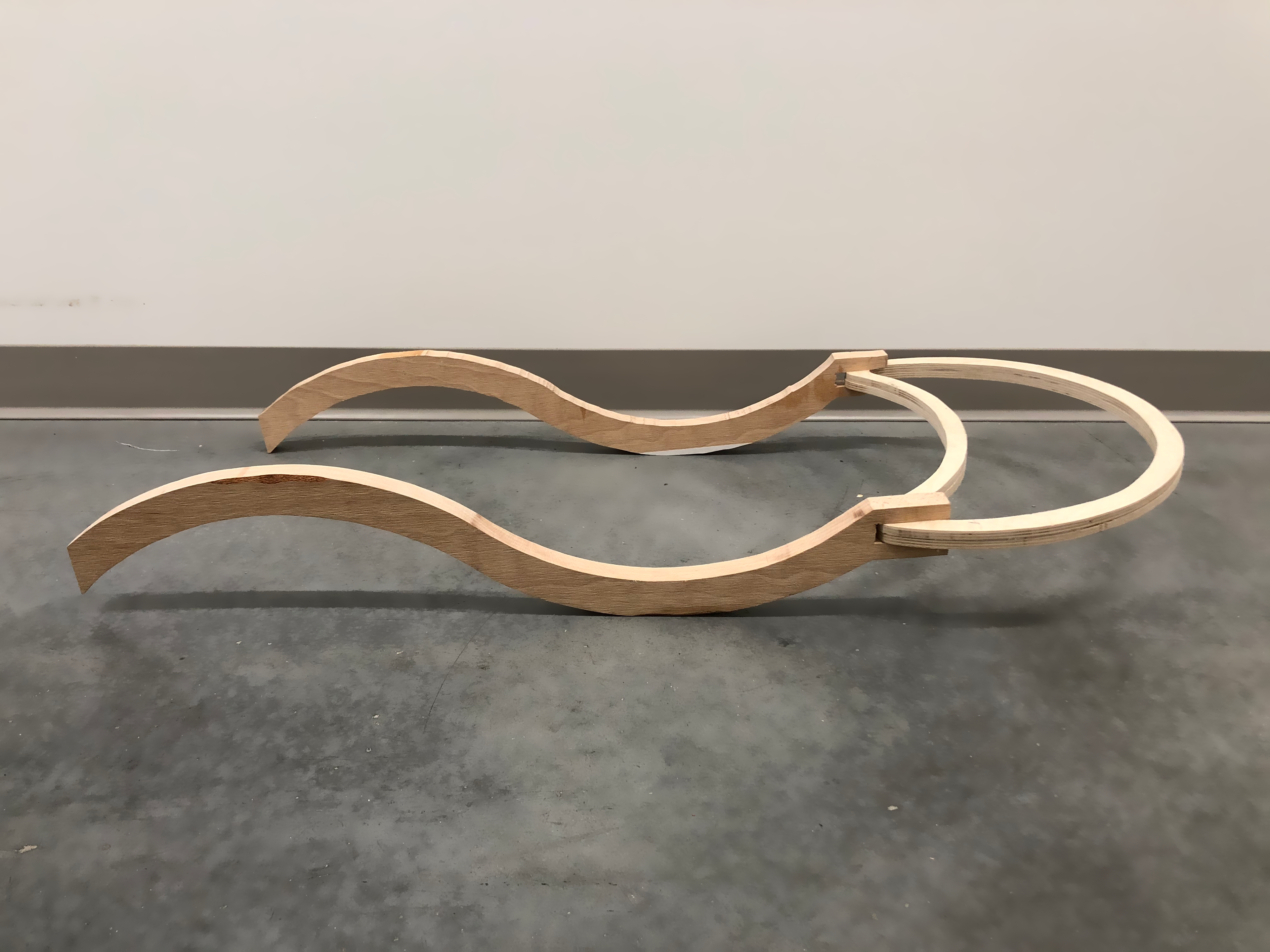
We thought of a throwing game that would invite players to search for kelp like one would look for the ideal skipping rock.
The game would be composed of different pieces, which would be portable enough for the players to take to their local beach. The players would use the parts to build a structure, look through the pieces of kelp found on the shore, rinse them if preferred and aim to hang them from the frame by throwing them from some distance.
We didn’t include instructions; still, we had some references, a drawing illustrating how the puzzle looks when built and a piece of kelp made of fabric.
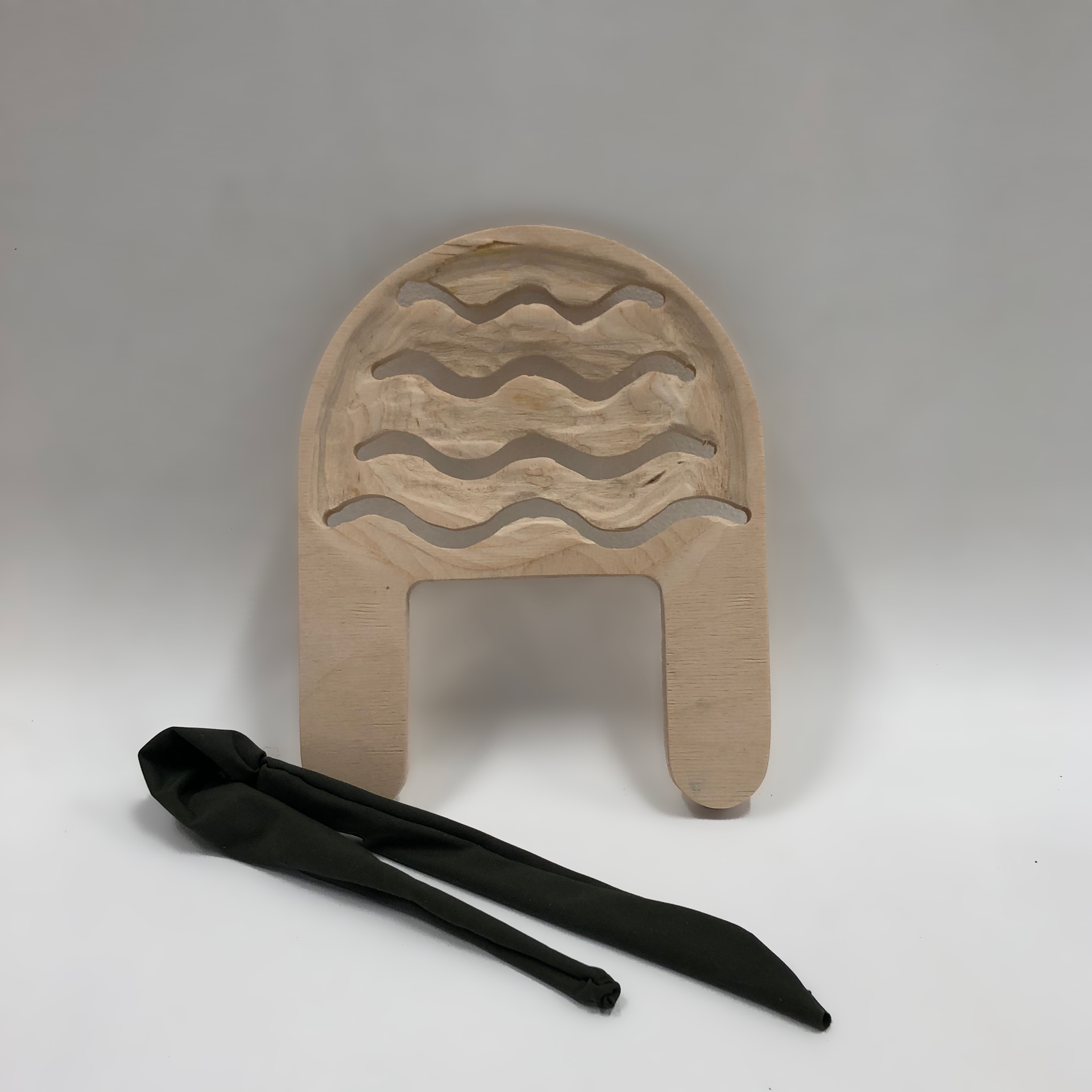
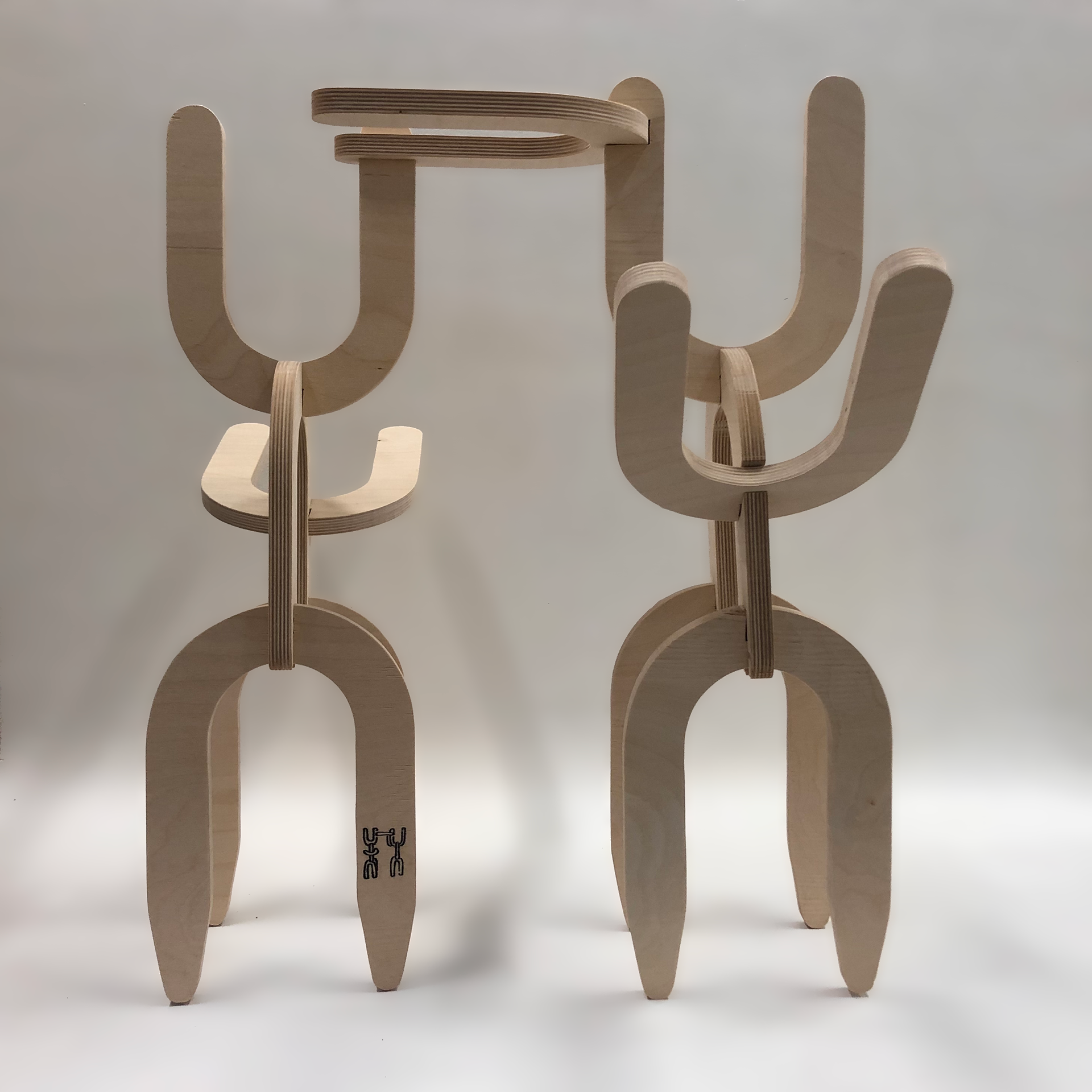
KEY LEARNINGS
Understanding where your design will be situated and if it would work for that context is crucial. We tend to imagine the scenarios, but it is also essential to re-enact our designs’ use.
When working with nature, we’ve learned to collaborate rather than find ways to control it.
Rituals in design are essential as they are important in life; these practices can allow individuals to take a step back, observe and be present. These can help create a space of reflective thinking to navigate unknown waters.